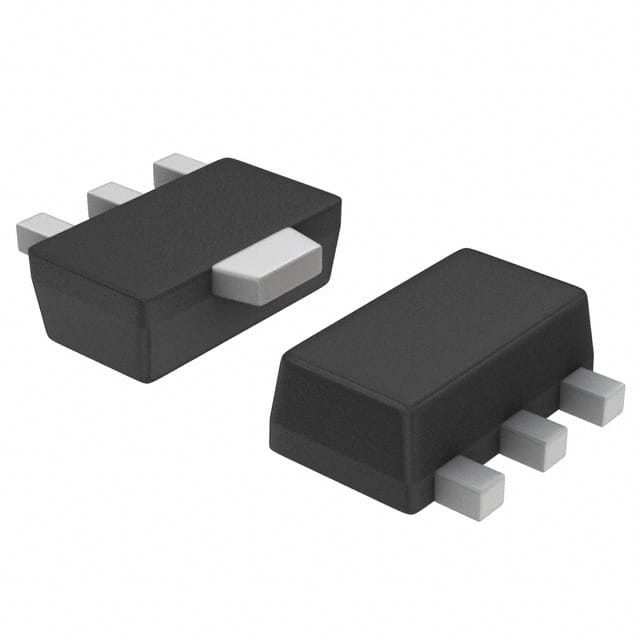Xem thông số kỹ thuật để biết chi tiết sản phẩm.

2SB1121T-TD-E
Product Category: Transistor
Basic Information Overview: - Category: Bipolar Junction Transistor (BJT) - Use: Amplification and switching in electronic circuits - Characteristics: High current and voltage capability, low noise, high frequency response - Package: TO-252-3 (DPAK) - Essence: NPN silicon epitaxial planar transistor - Packaging/Quantity: Typically available in reels of 3000 units
Specifications: - Collector-Base Voltage (VCBO): 60V - Collector-Emitter Voltage (VCEO): 50V - Emitter-Base Voltage (VEBO): 6V - Collector Current (IC): 3A - Power Dissipation (PD): 2W - Transition Frequency (fT): 150MHz - Operating Temperature Range: -55°C to 150°C
Detailed Pin Configuration: - Pin 1 (Emitter): Connected to the emitter region of the transistor - Pin 2 (Base): Connected to the base region of the transistor - Pin 3 (Collector): Connected to the collector region of the transistor
Functional Features: - High current gain - Low saturation voltage - Fast switching speed
Advantages and Disadvantages: - Advantages: - High current and voltage capability - Low noise - High frequency response - Disadvantages: - Sensitive to temperature variations - Limited power dissipation capability
Working Principles: The 2SB1121T-TD-E operates based on the principles of bipolar junction transistors, utilizing the control of current flow between its three terminals to amplify or switch electronic signals.
Detailed Application Field Plans: - Audio amplifiers - Switching circuits - Power supply control
Detailed and Complete Alternative Models: - 2SB1121 - 2N3904 - BC547
This comprehensive entry provides a detailed understanding of the 2SB1121T-TD-E transistor, covering its specifications, pin configuration, functional features, advantages and disadvantages, working principles, application field plans, and alternative models.
Liệt kê 10 câu hỏi và câu trả lời thường gặp liên quan đến ứng dụng 2SB1121T-TD-E trong giải pháp kỹ thuật
What is the maximum collector current of 2SB1121T-TD-E?
- The maximum collector current of 2SB1121T-TD-E is 3A.
What is the maximum collector-emitter voltage of 2SB1121T-TD-E?
- The maximum collector-emitter voltage of 2SB1121T-TD-E is 50V.
What is the power dissipation of 2SB1121T-TD-E?
- The power dissipation of 2SB1121T-TD-E is 1W.
What are the typical applications of 2SB1121T-TD-E?
- Typical applications of 2SB1121T-TD-E include general-purpose switching and amplification in electronic circuits.
What is the thermal resistance of 2SB1121T-TD-E?
- The thermal resistance of 2SB1121T-TD-E is approximately 83°C/W.
Is 2SB1121T-TD-E suitable for use in audio amplifier circuits?
- Yes, 2SB1121T-TD-E can be used in audio amplifier circuits due to its general-purpose amplification capabilities.
What are the recommended operating conditions for 2SB1121T-TD-E?
- The recommended operating conditions for 2SB1121T-TD-E include a collector current of 1A and a collector-emitter voltage of 20V.
Does 2SB1121T-TD-E require a heat sink for proper operation?
- It is recommended to use a heat sink with 2SB1121T-TD-E to ensure proper heat dissipation, especially when operating at higher currents.
Can 2SB1121T-TD-E be used in high-frequency applications?
- While 2SB1121T-TD-E is not specifically designed for high-frequency applications, it can still be used within its specified frequency range.
What are the key differences between 2SB1121T-TD-E and similar transistors in its class?
- The key differences may include variations in maximum ratings, gain characteristics, and thermal properties, which should be carefully considered when selecting a transistor for a specific technical solution.

